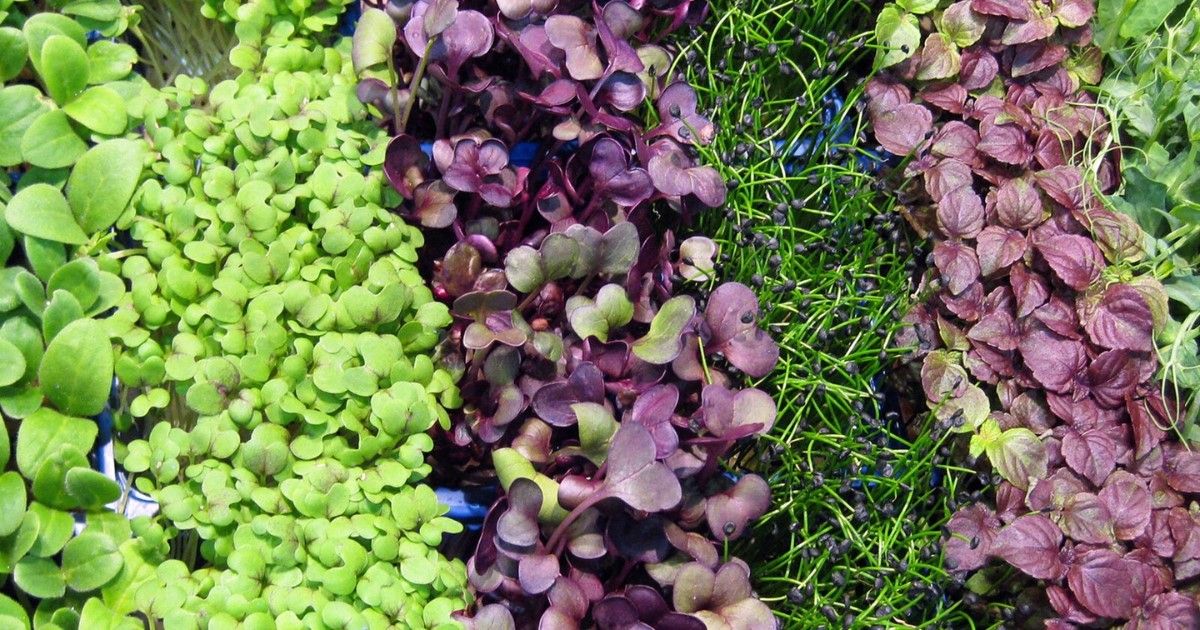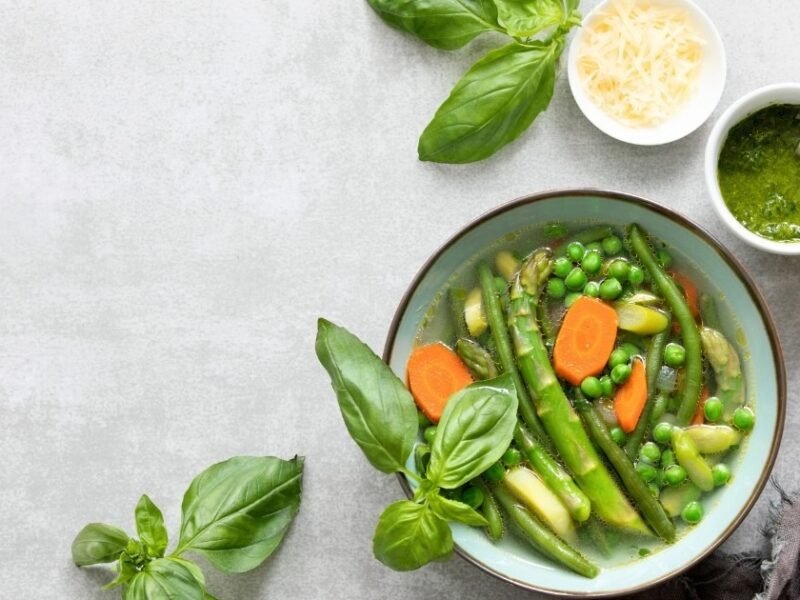
A Chef’s Guide to Microgreens & Edible Flowers for Garnishes and Beyond
Microgreens and edible flowers have evolved from mere trends to essential components in contemporary cuisine. These delicate, flavorful ingredients add a touch of freshness and visual artistry to dishes, making them staples in upscale dining and farm-to-table establishments.
This guide delves into the fascinating world of microgreens and edible flowers. We’ll cover popular varieties, their uses, and best practices for chefs, providing you with essential insights into these vibrant ingredients.
1. What Are Microgreens and Edible Flowers, and Why Do They Matter?
Microgreens are young vegetable greens harvested shortly after their first true leaves appear. They pack a punch in terms of flavor, texture, and nutrients, making them a valuable addition for chefs aiming to enhance their dishes.
Edible flowers are safe to eat and offer a delicate burst of color and fragrance. They can be added to a wide range of dishes and cocktails.
Here’s why these ingredients are essential for chefs:
- Nutrition: Microgreens are nutrient-dense, loaded with vitamins C, E, and K, along with antioxidants that appeal to health-conscious diners. Studies have shown that they have 6x—40x the nutrient density of their mature counterparts!
- Flavor: Their intense flavors can range from peppery to sweet and herbaceous, allowing chefs to create layered and complex dishes.
- Visual Appeal: The vibrant colors and unique textures of microgreens and edible flowers can transform plating, turning cocktails and dishes into visual masterpieces.
- Year-Round Availability: Microgreens and edible flowers bring a refreshing element to any dish, no matter the season!
With so many benefits, it’s no wonder that the demand for microgreens has grown exponentially in the past few years and continues to flourish.
The U.S. microgreens market generated USD 638.4 million in 2023 and is expected to reach USD 1,409.0 million by 2030, with a CAGR growth of 12%. This indicates that microgreens are more than a mere trend – they are becoming a staple in restaurant kitchens nationwide.
2. Top Microgreens & Edible Flowers for NYC Restaurants
With more than 60 varieties of microgreens available on the market, selecting the right fresh microgreens for dishes can be challenging. Here are some of the most sought-after microgreens and edible flowers to incorporate into your culinary creations:
Microgreens
- Micro Basil: Sweet and aromatic, ideal for Italian dishes and cocktails. Opt for lemon basil micros for a bright, citrusy flavor or purple basil micros for a peppery addition with vibrant tones.
- Micro Amaranth: Provides a striking contrast to dishes with deep red hues.
- Micro Celery: Delivers a fresh, herbaceous punch for soups and seafood.
- Micro Wasabi: Delivers a bold, spicy kick that pairs well with Asian-inspired dishes.
- Micro Arugula: Adds a nutty, peppery flavor, ideal for pizzas, salads, or as a garnish for grilled meats.
- Micro Beets: Their earthy sweetness and vibrant magenta hue enhance both flavor and presentation in appetizers and mains.
- Micro Cress: Offers a sharp, peppery taste, perfect for sandwiches, roasted vegetables, or creamy soups.
- Micro Sakura Mix: A colorful mix of mild and spicy flavors, this blend adds variety to garnishes and salads.
- Micro Cilantro: Brings a bright, citrusy flavor, ideal for tacos, ceviche, and fusion dishes.
- Micro Watercress: Known for its refreshing, slightly bitter flavor, it’s a perfect addition to salads, sandwiches or as a garnish for seafood.
- Micro Hearts on Fire: Eye-catching with its red-veined leaves, it offers a mild, tangy flavor that complements savory and sweet dishes.
Edible Flowers
- Pansy: Mildly grassy with beautiful colors, great for desserts and salads.
- Blue Borage: With a cucumber-like flavor, it enhances cocktails and light appetizers.
- Squash Blossoms: Subtle and slightly sweet, often stuffed or fried.
- Orchid Blooms: Elegant and neutral in taste, are perfect for visual appeal in desserts and drinks.
3. How to Use Microgreens & Edible Flowers in Restaurant Dishes
Microgreens and edible flowers add flavor, texture, and visual appeal to a various dishes, from appetizers to main courses and desserts or beverages. Their adaptability makes them essential in contemporary kitchens. Here are some ideas for incorporating them:
As Garnishes
Boost the visual charm of appetizers, main courses, or desserts with a sprinkle of microgreens or a few edible flowers.
- Appetizers: Top creamy soups, such as butternut squash or gazpacho, with micro celery or micro cilantro for a refreshing contrast.
- Main Dishes: Add a dash of micro amaranth or hearts on fire to a beautifully plated steak or pasta dish for a vibrant touch.
- Desserts: Decorate cheesecakes, chocolate tarts, or panna cotta with delicate pansies or orchid blooms for an elegant finish.
In Salads
Combine microgreens like watercress, micro arugula, and micro beets with seasonal greens to create a salad that is both visually striking and texturally interesting. Include edible flowers for depth of flavor and bright colors.
For Proteins
- Meat and Fish: Elevate grilled salmon with micro purple basil for a hint of licorice or top roasted chicken with wasabi microgreens for a spicy kick.
- Plant-Based Proteins: Incorporate blue borage into a vegan risotto or garnish tofu with micro arugula to highlight nutty flavors.
In Cocktails
Float squash blossoms or pansy petals in gin-based cocktails for an upscale presentation. Garnish margaritas or mojitos with micro basil or cilantro for an aromatic touch and a fresh herbal flavor.
In Breakfast and Brunch Dishes
To create an Instagram worthy breakfast, add a touch of watercress to avocado toast or sprinkle micro celery over eggs benedict to enhance classic breakfast favorites. Edible flowers are the perfect addition to decorating and brighten up waffles or pancakes for a colorful morning treat.
As Key Ingredients
- Sauces and Pestos: Blend micro basil or cilantro into fresh pestos, salsas, or chimichurri for enhanced flavor.
- Soups: Fold micro cress or hearts on fire into creamy or brothy soups just before serving to preserve their vibrant texture and flavor.
For Desserts
Add micro mint to fruity sorbets or use floral elements like orchid blooms to plat mousse, cakes, or éclairs.
Pro Tips for Using Microgreens and Edible Flowers
- 1. Balance is Key: Use microgreens and flowers in moderation to enhance the dish without overwhelming it.
- 2. Play with Contrasts: Pair bold, spicy microgreens like wasabi with creamy dishes or sweet elements for an exciting flavor combination.
- 3. Stay Seasonal: Choose microgreens and flowers that align with the season and the theme of your menu to ensure consistency and freshness.
- 4. Tell a Story: Use them to contribute to the dish’s narrative. For instance, incorporate locally grown microgreens to emphasize a farm-to-table approach.
Storing Microgreens to Maximize Freshness
Maintaining freshness is crucial for the quality of microgreens and edible flowers. Proper storage helps these delicate ingredients retain flavor and texture, enhancing your dishes every time.
Here are some tips to keep them at their best:
- Refrigeration: Store them at a stable, cool temperature (32–40°F).
- Packaging: Opt for breathable containers or loosely wrap them in damp paper towels to avoid wilting.
- Handling: Rinse only before use, as excess moisture can lead to spoilage.
- Rotation: Use the freshest items first to reduce waste.
5. Where to Buy Wholesale Microgreens in NYC?
Restaurant kitchens require a steady supply of fresh microgreens and edible flowers. A reliable wholesale food supplier can keep up with the demand and deliver these precious ingredients at peak freshness to preserve flavor and nutritional value.
At Valley View Produce, we offer a wide variety of wholesale microgreens and edible flowers. From local microgreens to unique varieties, we guarantee freshness, quality, and timely delivery.
Valley View Produce is your one-stop-shop for your every kitchen need! Discover our selection and place your online order today.






